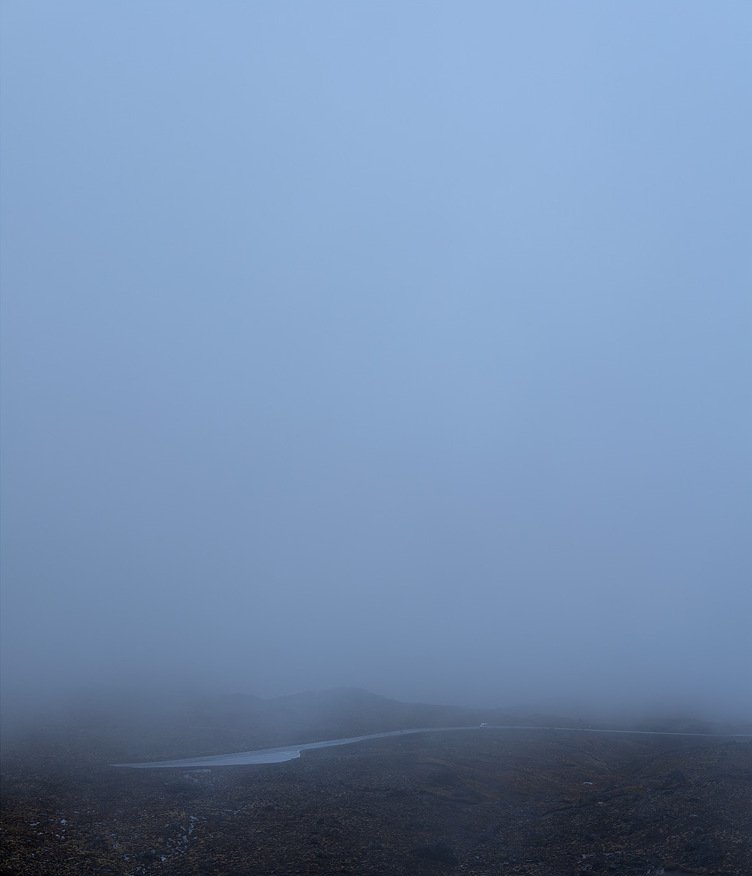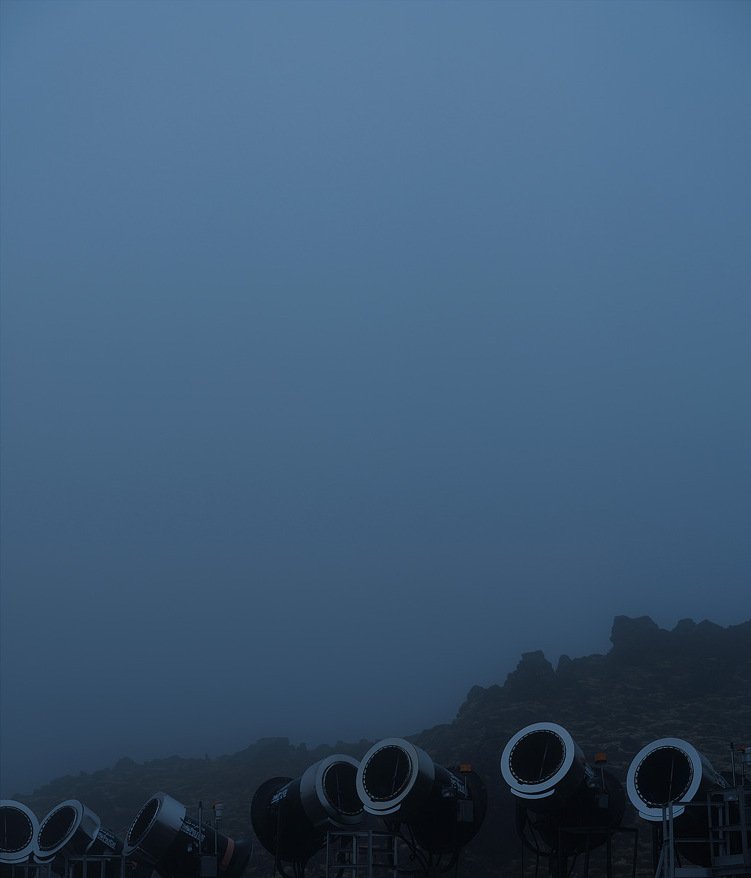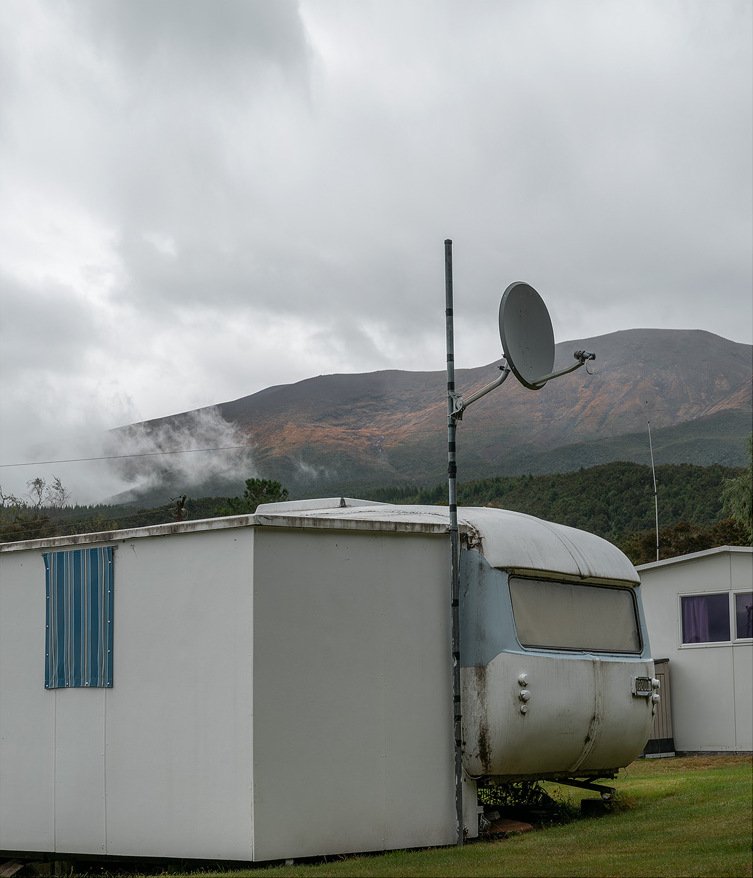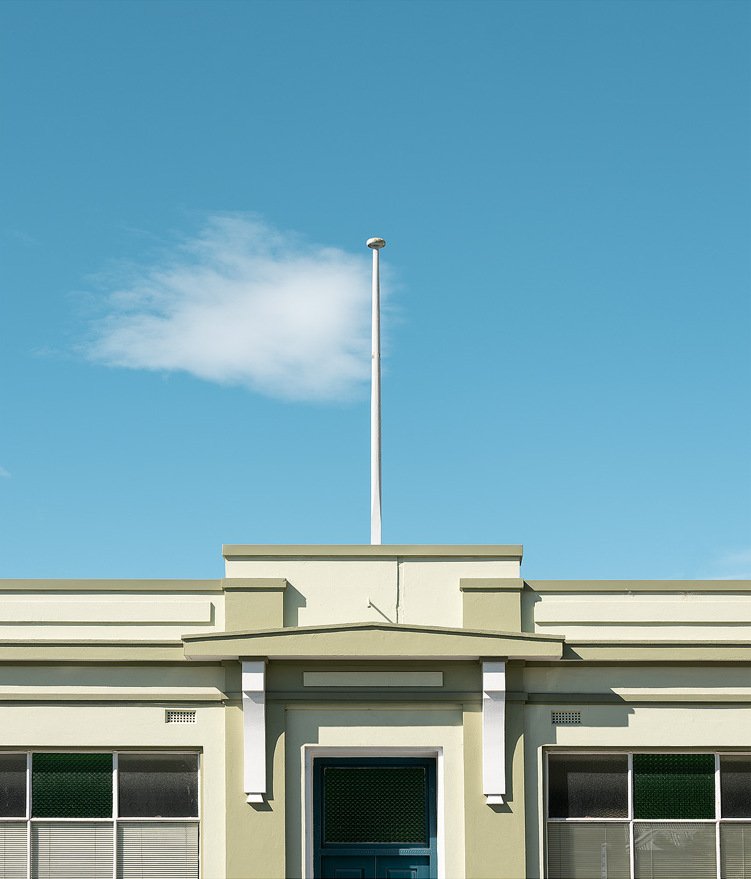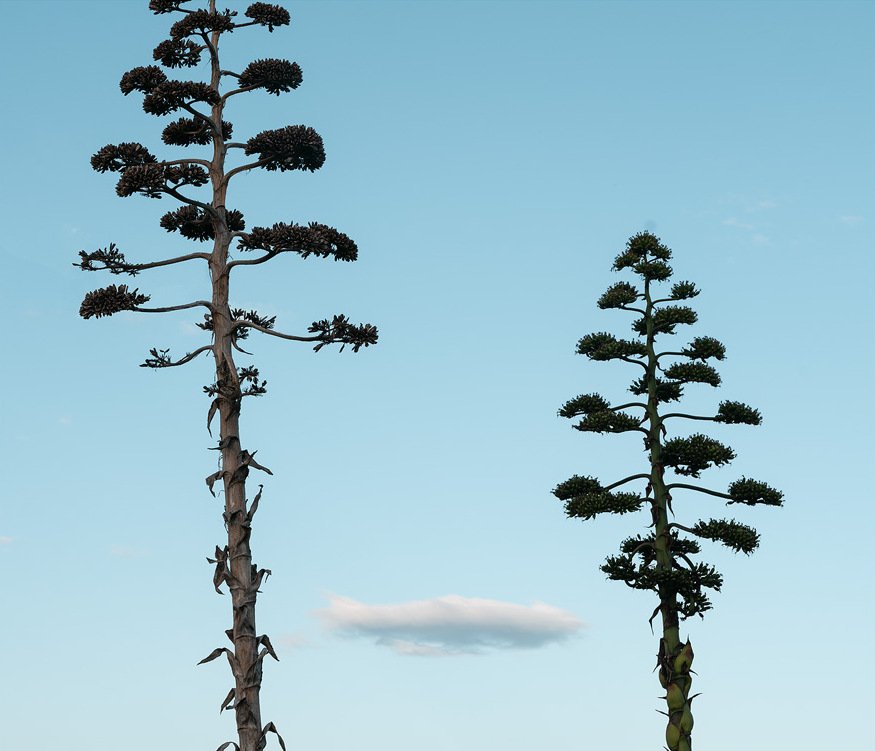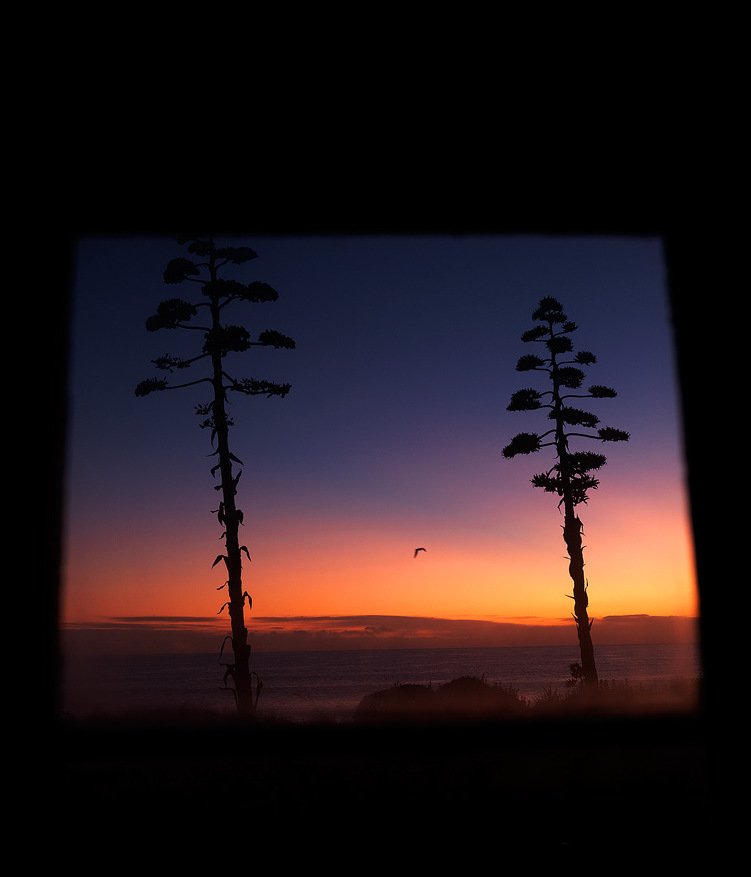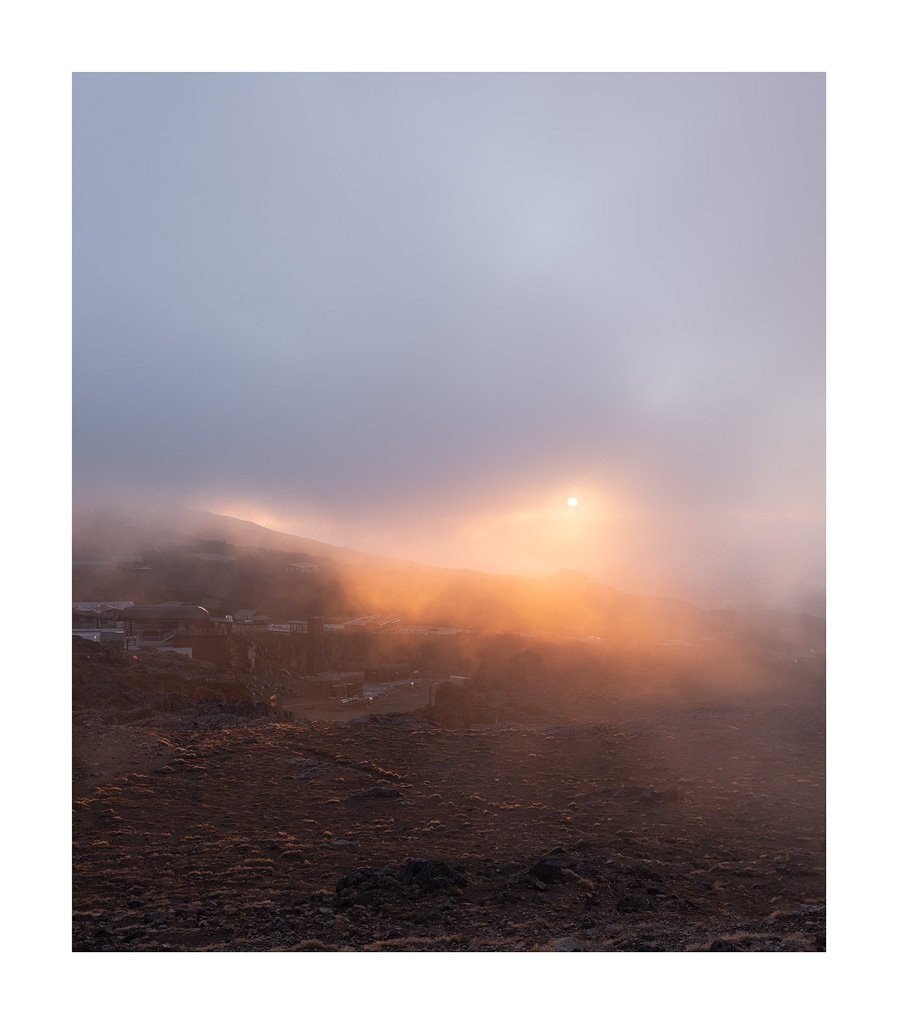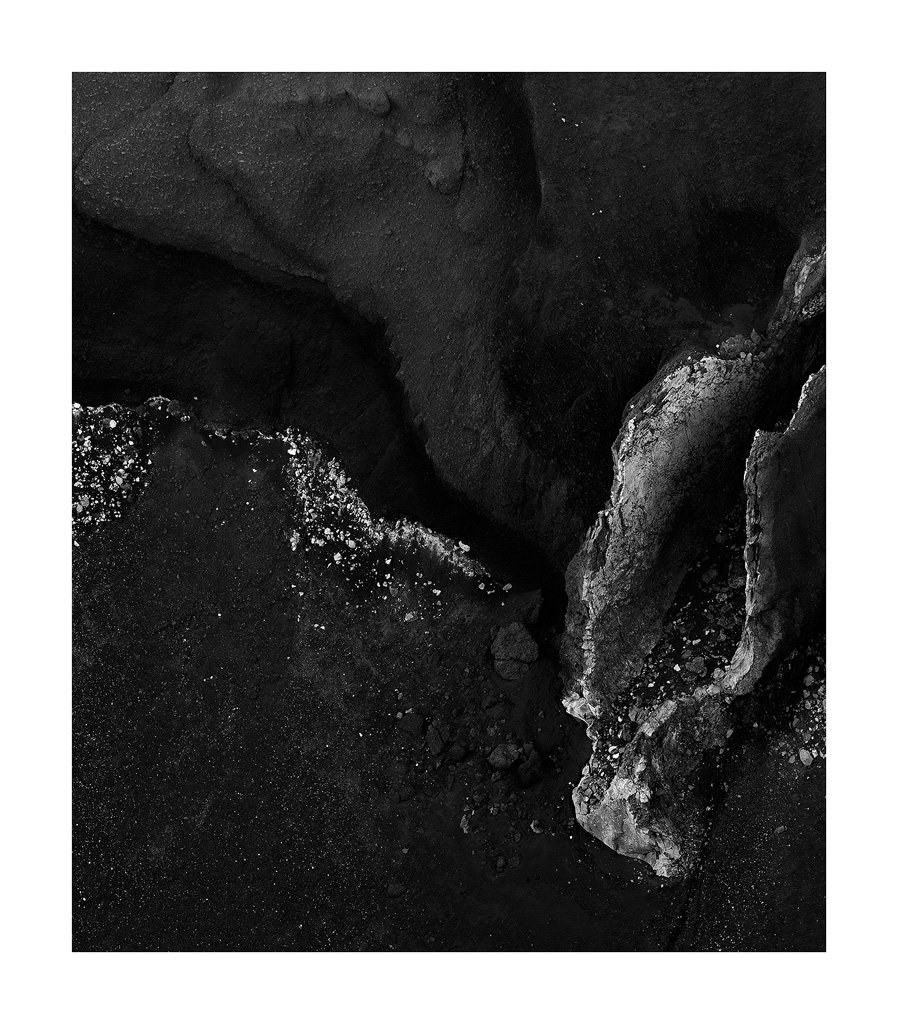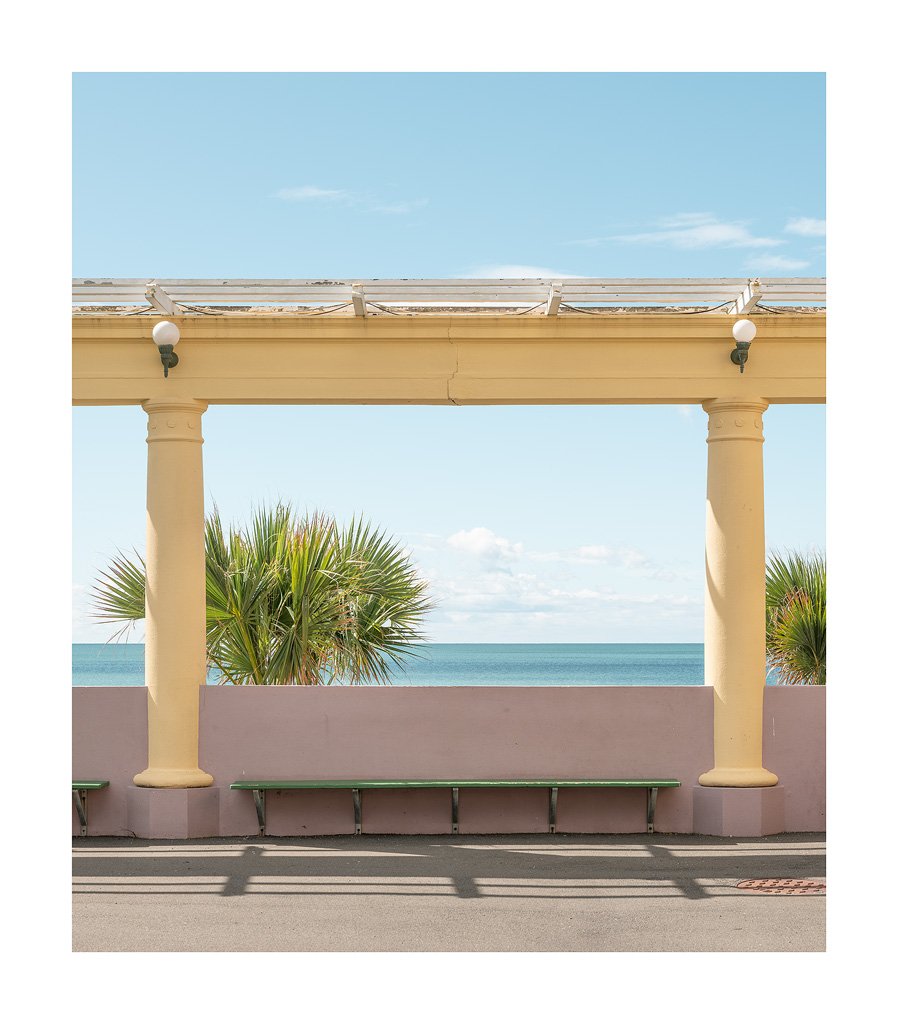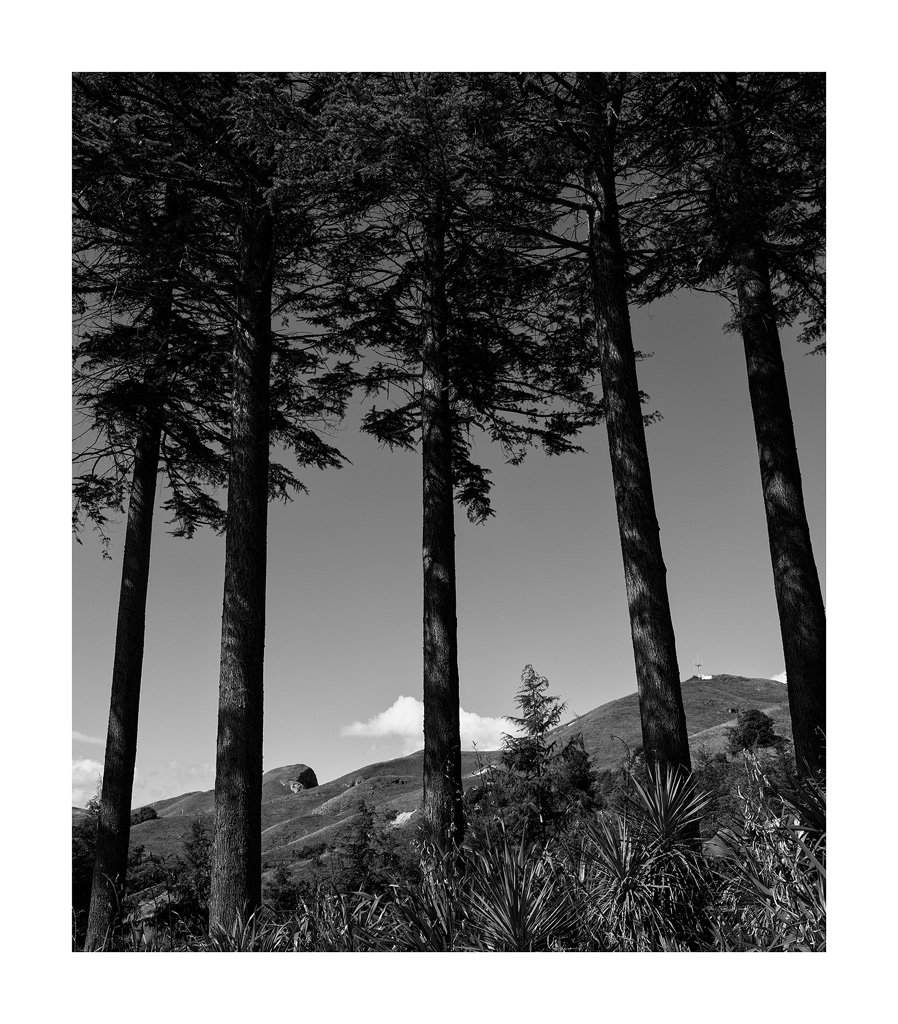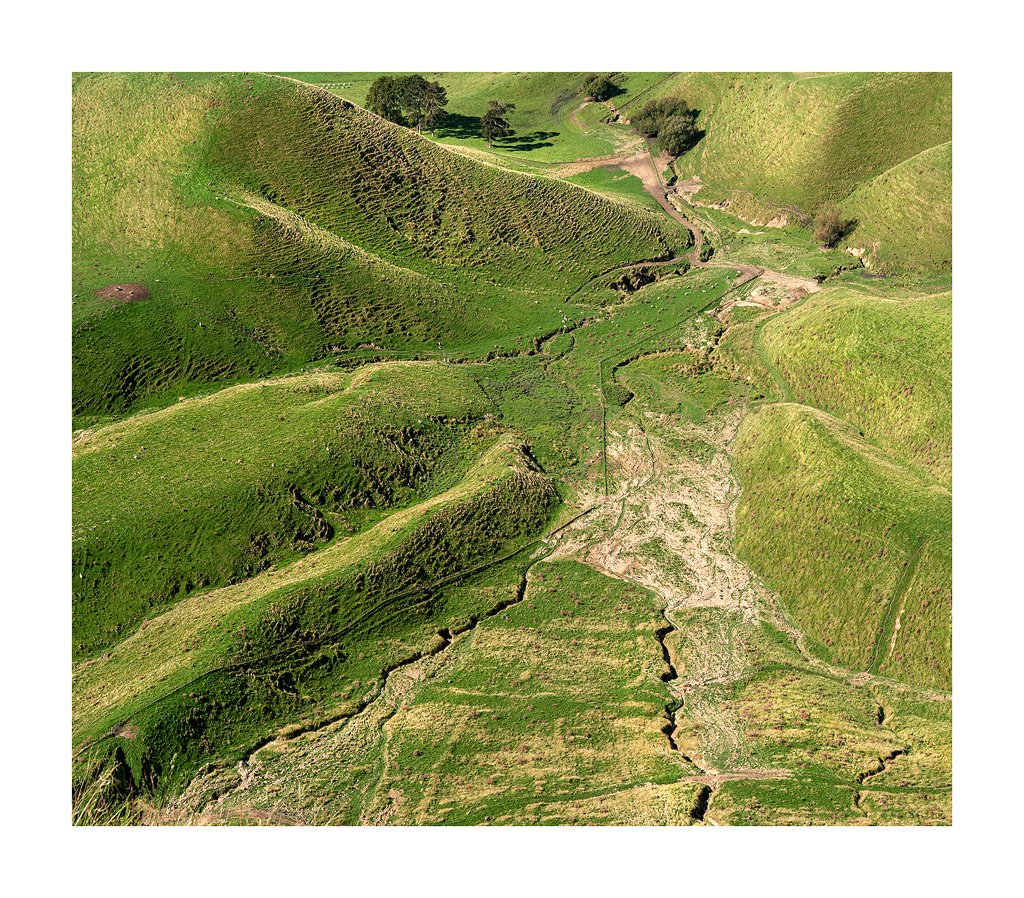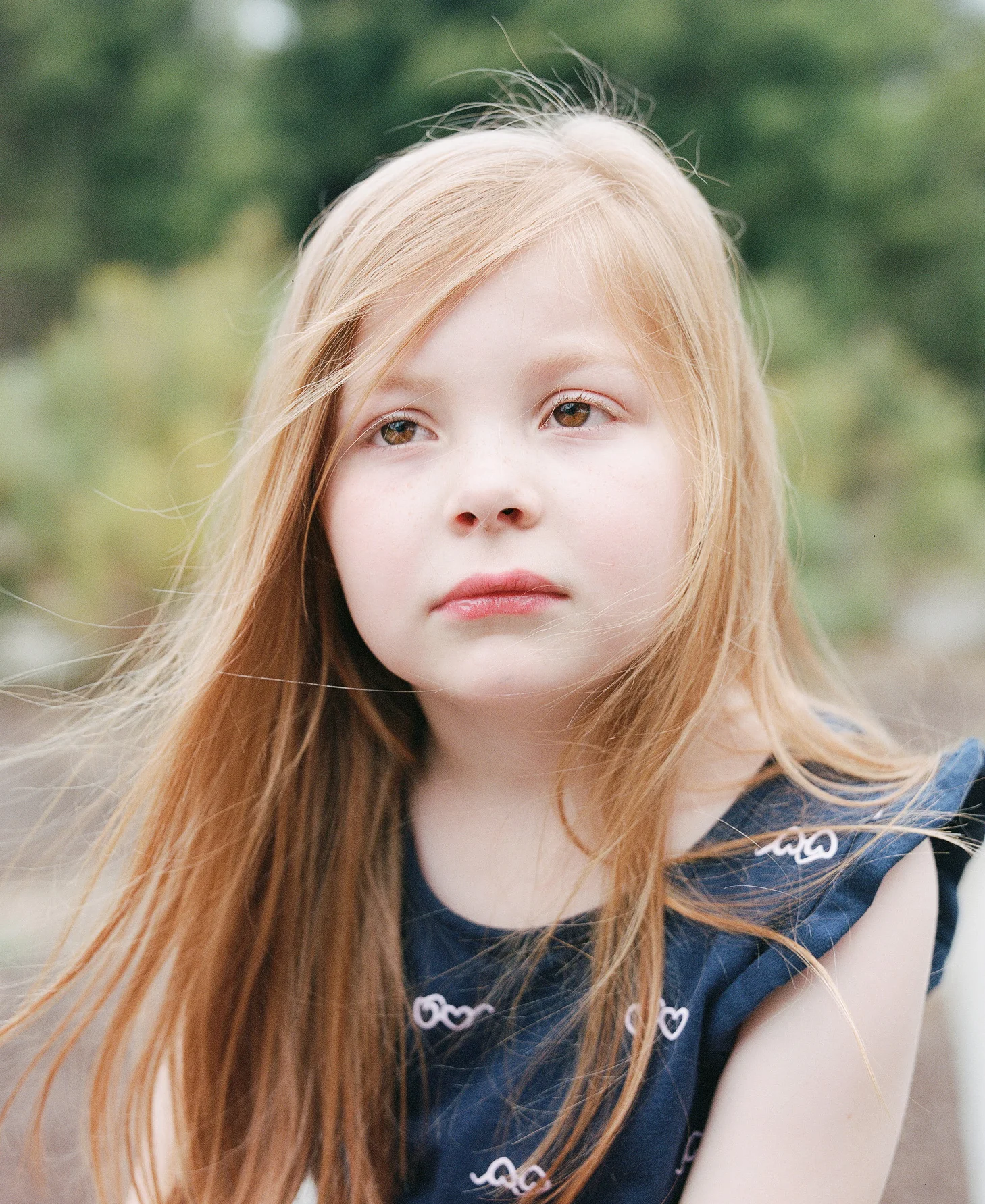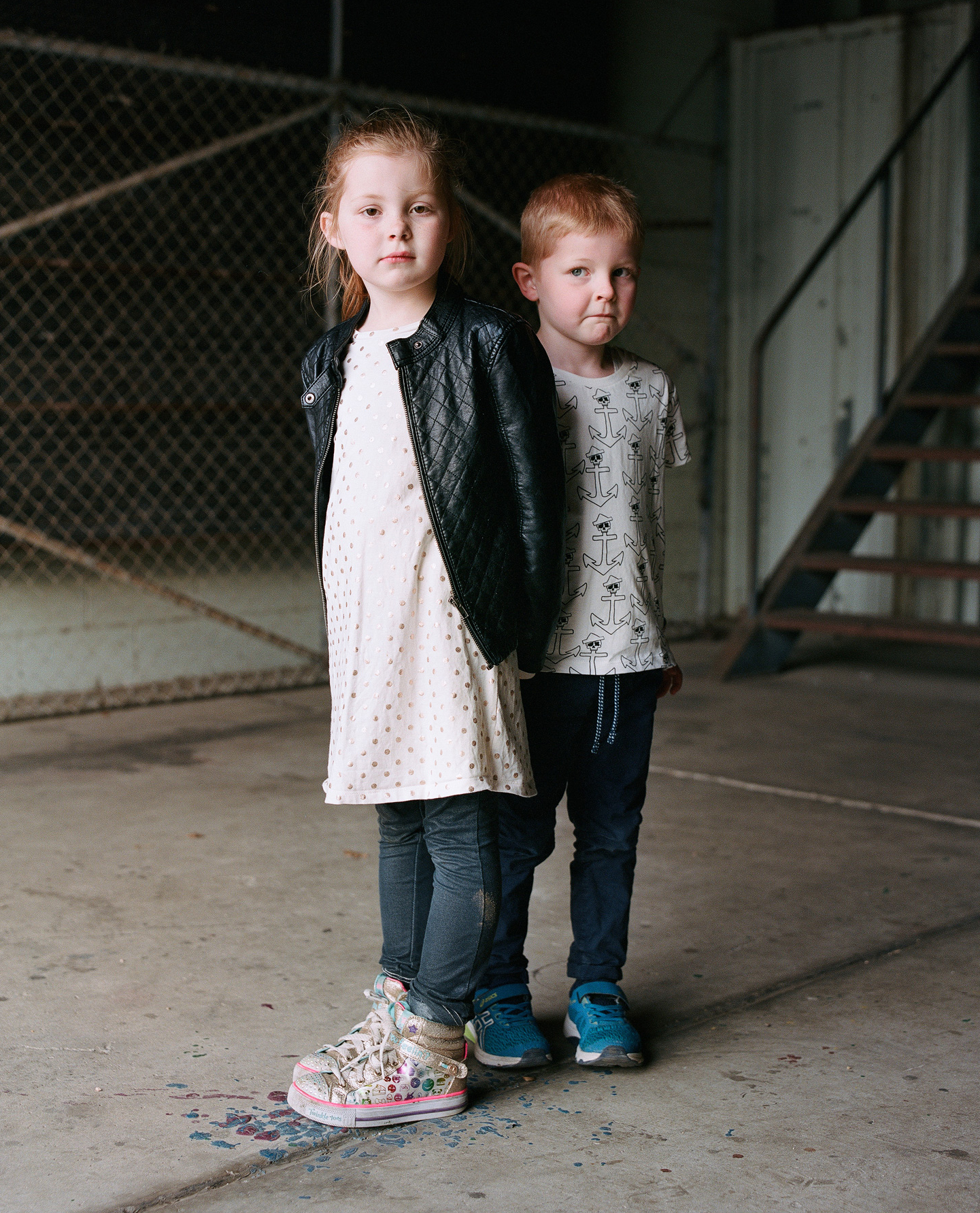Three years ago my friend and I planned a trip to do the Tongariro Crossing on New Zealand’s North Island. Often hailed as one of the best day walks in the world, this had been on my bucket list for a long time. I’d seen photos of the Emerald lakes and ‘Mt Doom’, wanted nothing more than to do a bit of hiking and capture some creative images of this unique environ.
I’ve had this image of Mount Ngauruhoe in my mind’s eye for a long time. It was nice to finally tick it off on the Tongariro Crossing.
We were packing, getting ready to go and… COVID. Right before we were about to leave, the world went into lockdown. So it is we finally got to make the trip, cutting it down to just the North Island for a span of a week, moving from the Tongariro National Park to Napier and then down to Wellington and Cape Palliser.
I’ve titled this series of images ‘Ghostland’. Walking around New Zealand I was struck by the prevalence of vaping. You’d be walking along a city street and these puffs of vape would cloud out into the sky from a car window or a walker-by. ‘It’s like a land of ghosts’, I thought to myself. This is something that became true in more ways than one as I both took photos and visited these locations I’d so longed for in my head.
The moonlike landscape of the Tongariro Crossing in New Zealand’s North Island. We couldn’t have asked for better weather.
Mead’s Wall via Whakapapa Village.
This also marks the first time I see a real narrative or theme in my images. There’s a sense of isolation in them, of an alien world, of the ‘other’. New Zealand is the land of the long white cloud, and it’s this constant shifting cloud in the sky, the moving mists and waters, that remind of me of my birthplace.
But there are also ghosts of a symbolic kind at work, of ancestors and broken ties between the natural and urban world, on the effects of climate change and the pandemic on the country. We drove through parts of New Zealand that were only weeks prior ravaged by flooding and landslides, homes upturned and rail lines twisted as if chicken wire.
The Emerald Lakes on the Tongariro Crossing. It’s not the image I had in mind, but I’m happy with it nonetheless.
The focal point of this trip was the Tongariro National Park, located a couple of hours from Auckland and about as picturesque a place as you could imagine. The peaks of Mt Ruapehu and co were obscured in cloud when we arrived and remained that way for our three days in the park, finally showing themselves the morning we departed.
We stayed at Tongariro Discovery Lodge. I’d originally chosen the Discovery Lodge as they offered the first shuttle of the day to the crossing, which allows for you to walk as the sun’s coming up and, more importantly, beat the crowds. The accommodation itself was great, the staff friendly—couldn’t have asked for more.
The same goes for the day of the crossing. We really got absolutely ideal conditions for the Tongariro Crossing itself, with temperate weather, low winds and little cloud. Given the next day was a complete wash-out of driving rain and wind, I’m lucky we opted for the day we did.
Hiking up in twilight, with the moon rising, was the perfect way to do the crossing.
I like negative space, apparently, and like most areas of my photography in recent years, I’ve come to embrace it.
The walk really lives up to its reputation. You start off in scrubby lowland and make your way past the twin peaks of Mt. Tongariro and Mt. Ngauruhoe. Starting in darkness meant the landscape was slowly revealed as we moved along, the moon setting as we made our way up the ridge towards the topmost point of the crossing looking down over the famous Emerald Lakes.
We reached this point at sunrise. The clouds were inverted and the lakes gleaming—It was quite the sight, though I did struggle finding any kind of meaningful composition. In fact, it wasn’t the lakes that ended up being the highlight but the barren, alien landscape before and after. We actually came up with this fictional character while walking we named ‘volcano man’ who creeps out from under the cover of darkness to snatch away stray hikers. Sadly, I don’t think it’s going to be a Hollywood blockbuster anytime soon.
After a dicey descent we dubbed ‘the slide’, we made it across to Blue Lake, which actually reminded me a lot the Blue Lake of the same name on the Main Range walk in Kosciusko National Park we did a year ago. We had lunch here and I was pretty taken by the absolute silence of the place. It was so calm—just the odd bit of breeze moving across the lake’s surface.
What follows from here is the long, long, long descent to the end of the crossing. I knew this was coming, but it did seem rather never-ending. It was a strange sensation descending slowly through the cloud back down to earth, so to speak.
Snow-making machines at Whakapapa Ski Resort.
In Tongariro we also spent some time heading up to Mead’s Wall via the Whakapapa ski resort. I believe this was one of the filming locations for Lord of the Rings. The ski resort was completely empty. It was so eerie seeing all this new equipment, this entire village and yet no one around. There were no cars, no nothing. This was another ghost-town moment, echoed by the fact so many restaurants, cafes and shops I’d noted down in the original itinerary hadn’t survived COVID. Even the mighty Chateau Tongariro has shut up shop, now bordered up and inaccessible.
What we did get up there was this spectacular sunset with the mist sweeping past us. We actually returned the day after the crossing when it was raining. You’ll notice a few shots of these snow canons used by the resort for snowmaking. They were all lined up in places and looking so alien and abstract I had to shoot them. When the rain became too heavy, I’d shoot through the windscreen once more channeling Todd Hido. As I mentioned, it doesn’t matter what the weather is, photos can be made.
Above are images from a nearby caravan park we drove through. I love these images because they incorporate so many quintessentially New Zealand elements, from the colored clothes pegs to the hills in the background, the long clouds, even the color of the grass.
From Tongariro we headed across to Napier. This coastal city is big on art deco. You might say it’s Napier’s ‘thing’. There were two cruise ships in when we arrived, which created a nice buzz in town. Until recently the flooding and general devastation had put a stop to tourism, so I’m sure the locals were excited to see things slowly getting back to normal.
We had a fantastic meal at Craggy Range Restaurant and journeyed out a bit for New Zealand’s best chocolate éclair (read: pretty much the size of my head) at Ohakune. We had intended to walk the coast to Cape Kidnappers, famous for its garnet colony, but couldn’t get the timing with the tides right. It wasn’t to be.
Napier, New Zealand. It pays to be ready for moments like this. It took some scrambling on the sidewalk, but I managed to place myself just in time to get this ‘cloud flag’ image of one of Napier’s many art deco buildings.
An abstract of a popular pagoda-type installation near the Napier shoreline. I only took a few frames, but I like the way the angles and shadows have worked in balance in this one.
We arrived in Wellington the following day and had another wonderful meal, this time at Rita. We both remarked how much the city of Wellington at large reminded us of San Francisco. The area we were staying in, Breaker Bay, was beautiful and just far enough from the city itself to feel like you were somewhere else entirely. I enjoyed a productive morning getting up for sunrise and copping one of New Zealand’s classic eye-poppers lighting up the sky, as seen below. I think this was the only time I used the tripod on the entire trip.
The day before we were due to leave we made the one-and-a-half hour (quite scenic) drive to Cape Palliser from Wellington. We had obligations back in Wellington, so we were never going to have long at the Cape per se. We jumped out of the car, I snapped a few frames and we made our way up the 258-odd steps to the top and back in the space of ten minutes. After the Tongariro Crossing and our crisscrossing of hilly Te Mata Peak back in Hastings, it didn’t seem that taxing. I had hoped for some interesting compositions of the famous tractors on the beach at Ngawi, but walking around them it wasn’t at all what I expected. I was a little disheartened on the way back we’d made this big drive for essentially nothing photographic, but going through the shots at home, one stood out…
I only took a few frames of the Cape Palliser lighthouse, but I like the way the cloud sits low and to the left here. Together with the staircase, it adds a nice sense of scale. It might feel criminal to convert this to black and white given the lighthouse’s patent white-and-red striping, but sometimes you have to go against what might be considered traditionally correct.
Once again, working with the Fuji GFX50R was wonderful. I was watching a video by Kyle McDougall recently where he talked about his decision to go with the GFX50R, and so much of it mirrored my own choice. I think it’s that perfect film-to-digital bridge. As Kyle shows, you can get very, very close results between the two, but for me it’s the ease of use, the deep editing latitude in the files and that medium-format (kind of) X-factor that makes even the mundane scenes I love so much come to life.
I used the GF45-100mm F4L OIS exclusively for this trip. It covers the exact focal range I need, from wide to slightly tele. Do I wish it was more compact? Sure. In fact, I’ve been eyeing off the 50mm pancake lens for a trip later this year where weight might be a concern, so we shall see.
These are the shots I seek out now. I’m looking for quirks of light, little pockets of it that raise questions. I can’t recall whether the shadow was a friend or a passer-by, and I like the mystery this adds.
Another example of how my photography has changed. This imported van, a common sight in New Zealand with that particular tint, was obscured by the bushes, but the camera’s gaze is voyeuristic too. You wonder what is past the van, what are they doing? The unseen.
When I arrived home, I wasn’t sure I had ‘gold’, so to speak, with these images. But once I started editing, I started to appreciate the darker side of some of these scenes, leaning into the low light or extreme minimalism.
I started to realize I’ve come a long way. Once upon a time, I would have used a tripod for every shot, matched levels perfectly in Photoshop to ensure nothing was too dark or underexposed. Now I process for mood rather than what is technically correct. I’m no longer scared of odd lighting conditions. In fact, I actively seek them out.
I also seek out compositions and subjects I know will not appeal to the masses. That might be rain crossing a car window or a blurry hill, but they speak to me. In doing so, I know they will speak to others, that my photography will find a place. Not everyone has to enjoy or ‘get’ it.
There is also duality in some of these images, like those pictured above of the two trees outside our accommodation near Hastings. This is an aspect of my photography I’m going to continue to push in coming trips.
Looking through these images, I’m pleased they raise questions. I want them to make people think and scratch their heads a little. There are photos here shot simply for the sake of composition, sure, but I hope you might see the deeper narrative at play.
Enough of this arty jibber-jabber then. Enjoy the photos. You can find the full gallery here or scroll down for the shots that didn’t make it.






